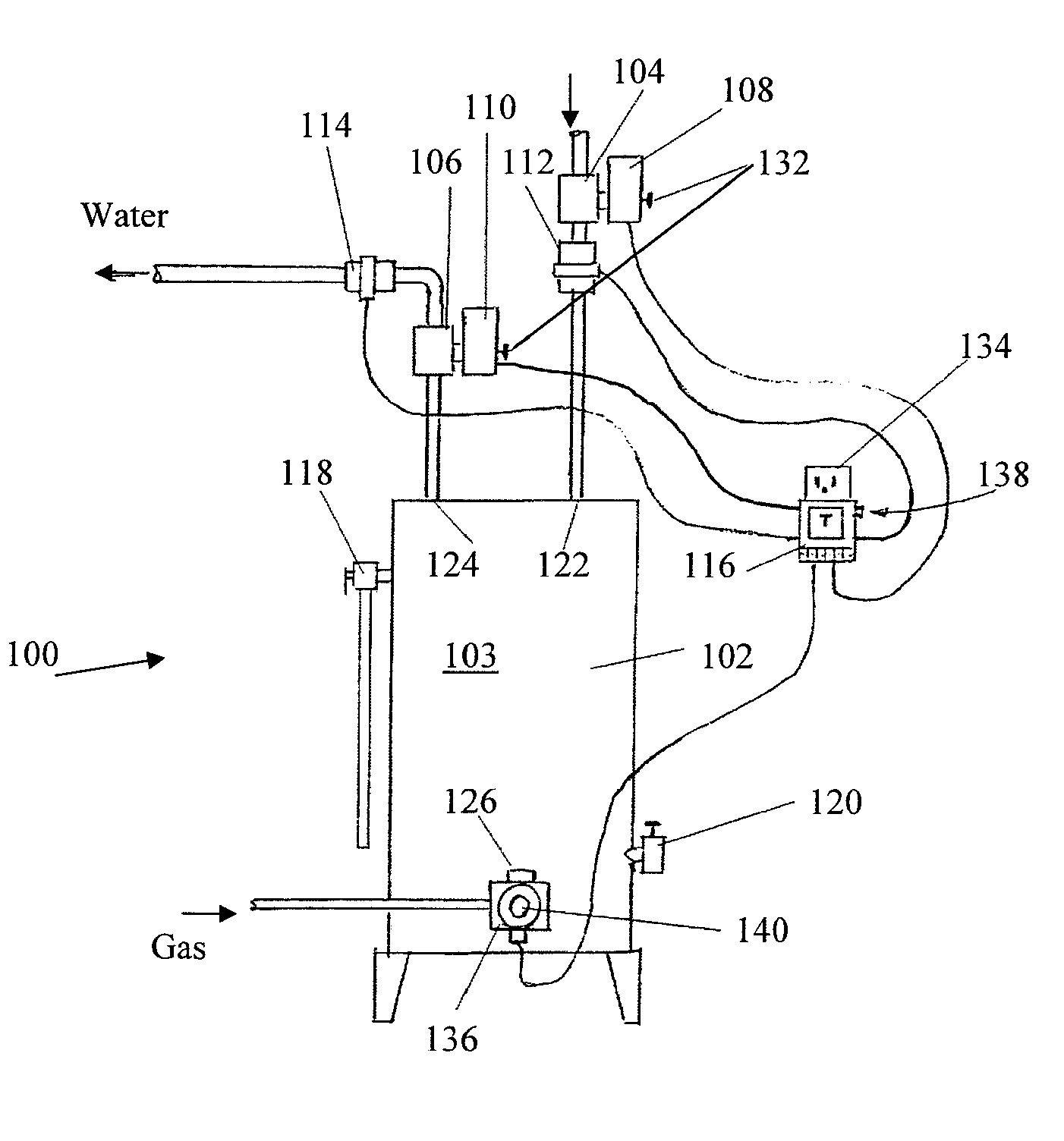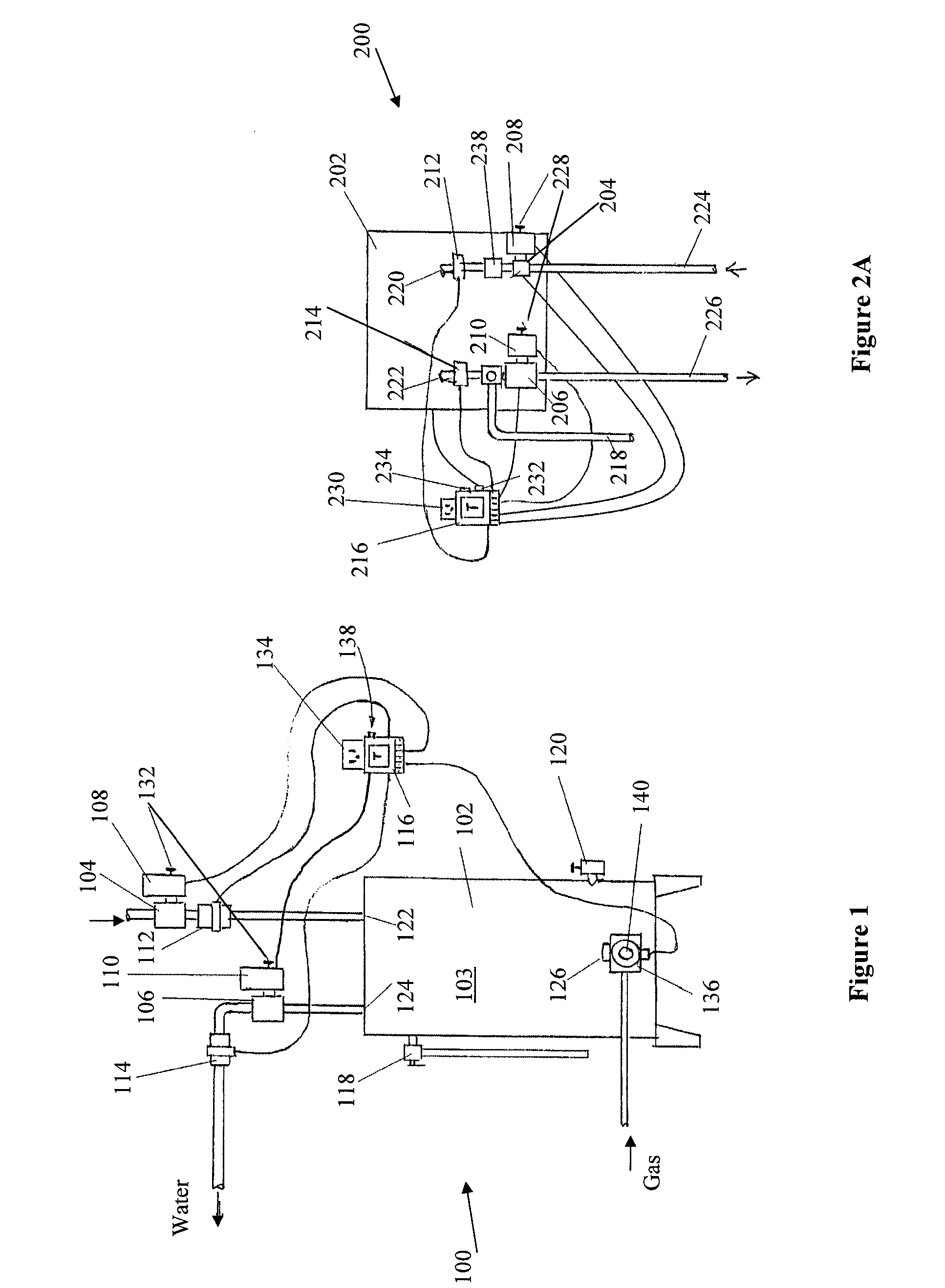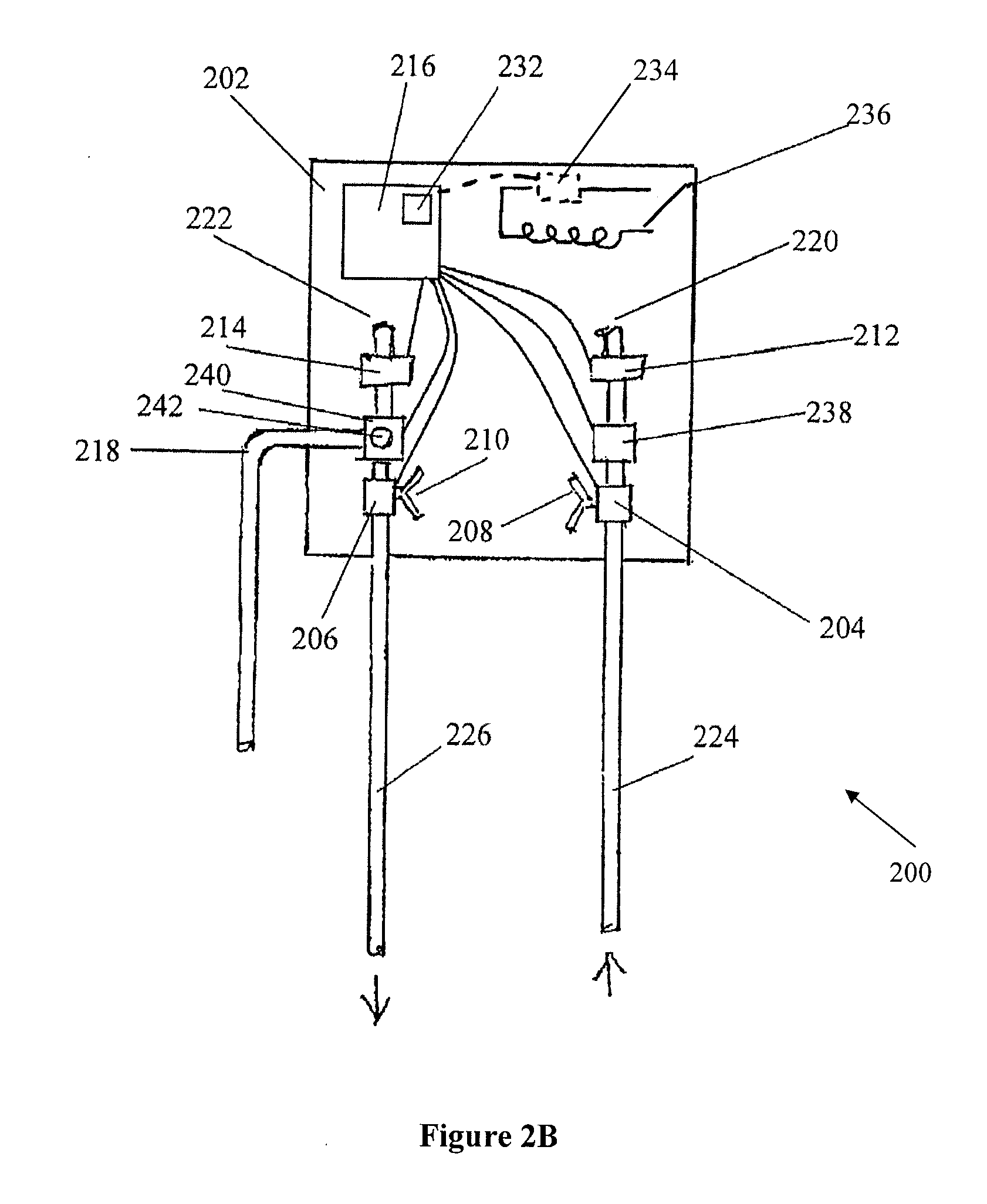Shut Off Protection For Hot Water Heater
a technology for shutting off protection and hot water heaters, applied in the field of water heaters, can solve the problems of valve failure, leakage of water, and damage to the structure and contents, and achieve the effect of preventing further water leakage and damag
- Summary
- Abstract
- Description
- Claims
- Application Information
AI Technical Summary
Benefits of technology
Problems solved by technology
Method used
Image
Examples
Embodiment Construction
[0028]In FIG. 1, system 100 is designed to shut off water flow to a water heater 102 upon detection of a leak. System 100 includes first 104 and second valves 106, first 108 and second valve actuators 110, first 112 and second sensors 114, and a controller 116.
[0029]Water heater 102 has a storage tank 103 for storing hot water. However, system 100 is contemplated to work with any commercially available water heater including for example, tankless water heaters shown in FIGS. 2A-2B, as well as other water heaters and boilers. Water heater 102 includes blowout valve 118 and drain pipe 120. Preferably, blowout valve 118 comprises a check valve that opens at a defined pressure threshold. Water heater 102 also includes a fluid inlet 122 and a fluid outlet 124. Water heater 102 further includes gas inlet 126, though it is contemplated that other sources of energy could be used including for example, oil and electricity.
[0030]First 104 and second valves 106 are disposed on an inlet pipe or...
PUM
| Property | Measurement | Unit |
|---|---|---|
| temperature | aaaaa | aaaaa |
| temperature | aaaaa | aaaaa |
| pressure | aaaaa | aaaaa |
Abstract
Description
Claims
Application Information
 Login to View More
Login to View More - R&D
- Intellectual Property
- Life Sciences
- Materials
- Tech Scout
- Unparalleled Data Quality
- Higher Quality Content
- 60% Fewer Hallucinations
Browse by: Latest US Patents, China's latest patents, Technical Efficacy Thesaurus, Application Domain, Technology Topic, Popular Technical Reports.
© 2025 PatSnap. All rights reserved.Legal|Privacy policy|Modern Slavery Act Transparency Statement|Sitemap|About US| Contact US: help@patsnap.com



